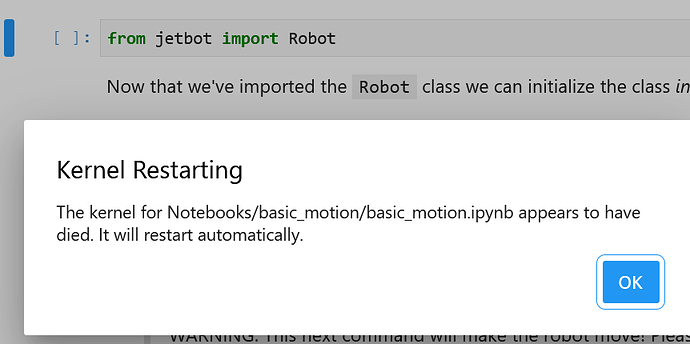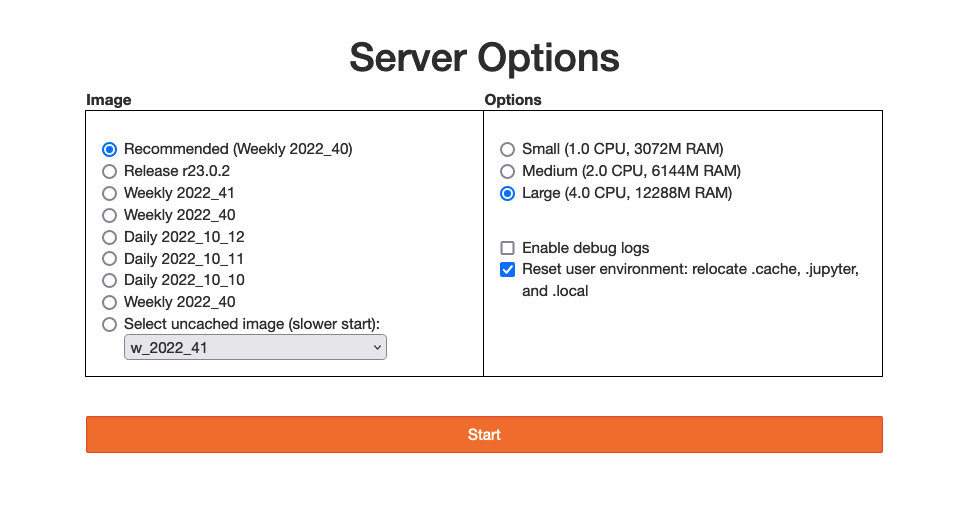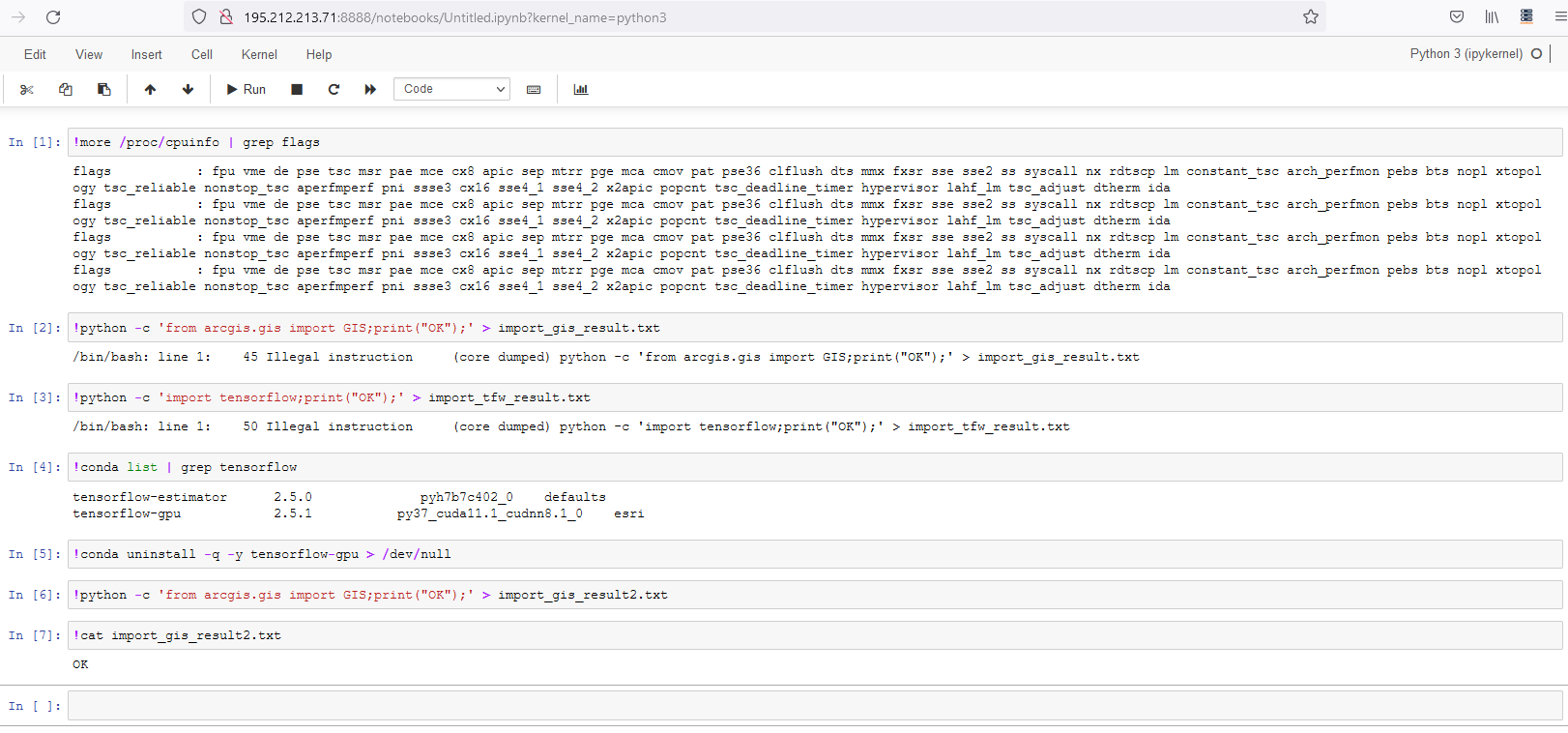The Kernel Appears To Have Died. It Will Restart Automatically.
Introduction to the kernel and its importance in an operating system:
The kernel is the core component of an operating system, acting as the bridge between the hardware and software. It plays a crucial role in managing system resources, providing a platform for applications to run on, and ensuring smooth communication between various hardware components. Without the kernel, an operating system simply would not function.
Explanation of the kernel’s primary tasks and responsibilities:
The kernel performs a wide range of tasks to ensure the proper functioning of the operating system. Some of its primary responsibilities include:
1. Memory management: The kernel allocates and deallocates memory resources to different applications, ensuring efficient memory utilization.
2. Process management: The kernel handles the creation, termination, and scheduling of processes, enabling effective multitasking.
3. Device management: It facilitates communication between software applications and hardware devices, managing operations such as input/output and driver management.
4. File system management: The kernel provides access to file systems, allowing programs to read, write, and manipulate files.
Understanding Kernel Panic
Definition and causes of a kernel panic:
A kernel panic is a critical error that occurs in the kernel of an operating system, causing it to halt all operations. It is often displayed as a black screen with white text or as a kernel panic message. Various factors can trigger a kernel panic, including:
1. Incompatible hardware or drivers: When the kernel encounters hardware or drivers that it cannot handle or are incompatible, it can lead to a panic.
2. Software bugs or glitches: Flaws in the operating system or the software running on top of it can cause the kernel to panic.
3. Insufficient system resources: If the system is overwhelmed with too many processes, applications, or memory demands, it can lead to a kernel panic.
Discussion on the significance and effects of a kernel panic on the system:
When a kernel panic occurs, the entire operating system freezes, rendering the system unresponsive. Any unsaved work may be lost, and the system needs to be restarted to recover. Kernel panics can result in data corruption, disruption of critical processes, and even system crashes if not addressed promptly.
Common Reasons for Kernel Panics
Detailed exploration of common causes for kernel panics, such as hardware issues or incompatible software:
1. Hardware issues: Faulty RAM, overheating CPUs, or malfunctioning graphics cards can trigger a kernel panic.
2. Incompatible or outdated drivers: Drivers that are not properly configured or are incompatible with the kernel version can lead to panics.
3. Software conflicts: Conflicts between different software applications, either due to compatibility issues or resource contention, can cause panics.
4. Corrupted system files: Damaged or missing system files can result in kernel panics as the kernel depends on these files for its proper functioning.
Explanation of how these issues impact the system’s stability and trigger a kernel panic:
Kernel panics are a result of critical errors that destabilize the system. These issues can cause conflicts, resource exhaustion, or corruption, leading to the kernel’s inability to continue normal operations. When the kernel encounters such conditions, it panics to prevent further damage and ensure system safety.
Automatic Restart: When and How it Occurs
Overview of the automatic restart feature following a kernel panic:
To prevent the user from being stuck with an unresponsive system, many operating systems incorporate an automatic restart feature after a kernel panic. Upon encountering a panic, the system will automatically reboot itself to attempt recovery and resume normal operations.
Explanation of the circumstances under which an automatic restart takes place:
Automatic restarts typically occur immediately after a kernel panic. However, the specific circumstances can vary depending on the operating system and its configuration. In some cases, the system may attempt to run diagnostics or perform recovery procedures before restarting.
Troubleshooting the “Kernel Appears to Have Died” Issue
Step-by-step guide on how to troubleshoot the “kernel appears to have died” error:
1. Restart the system: Begin by restarting the system to see if the issue resolves itself.
2. Update drivers and software: Ensure that all drivers and software are up to date to avoid conflicts and compatibility issues.
3. Run system diagnostics: Use built-in diagnostic tools to check for hardware faults or memory issues.
4. Check for overheating: Monitor the system’s temperature and clean any dust from fans and heat sinks.
5. Reinstall or repair the operating system: If the issue persists, consider reinstalling or repairing the operating system to fix any corrupted files.
Recommendations on specific actions to take to resolve the issue:
If the troubleshooting steps above do not resolve the issue, it may be necessary to seek professional help. Contacting technical support or consulting knowledgeable individuals can provide further assistance in troubleshooting and resolving the kernel panic issue.
Preventive Measures to Avoid Kernel Panics
Tips and best practices for avoiding kernel panics:
1. Keep the system up to date: Regularly update the operating system, drivers, and software to ensure compatibility and security.
2. Use compatible hardware and drivers: Before installing any hardware or drivers, verify their compatibility with the operating system.
3. Avoid excessive resource consumption: Be mindful of the number of processes and applications running concurrently to prevent resource exhaustion.
4. Perform regular system maintenance: Keep the system clean, free from malware, and maintain proper ventilation to prevent overheating.
Additional suggestions on maximizing system stability and minimizing kernel panics:
1. Use reliable software sources: Download software and applications from trusted sources to minimize the risk of installing buggy or malicious software.
2. Monitor system logs: Regularly check system logs for any warning signs or recurring issues that may lead to kernel panics.
3. Optimize system settings: Configure the system for optimal performance, ensuring that hardware resources are allocated efficiently.
4. Implement proper backup and recovery strategies: Regularly back up data to safeguard against potential data loss during a kernel panic or system failure.
FAQs:
1. Q: What is the “kernel appears to have died” error?
A: The “kernel appears to have died” error is a message displayed following a kernel panic, indicating that the kernel has halted and the system needs to restart.
2. Q: Why does the kernel need to restart automatically?
A: Automatic restarts following a kernel panic are implemented to prevent users from being stuck with an unresponsive system and to allow the operating system to recover and resume normal operations.
3. Q: How can I troubleshoot the “kernel appears to have died” error?
A: To troubleshoot the “kernel appears to have died” error, you can try restarting the system, updating drivers and software, running system diagnostics, checking for overheating, and reinstalling or repairing the operating system.
4. Q: How can I prevent kernel panics?
A: To avoid kernel panics, it is recommended to keep the system up to date, use compatible hardware and drivers, avoid excessive resource consumption, perform regular system maintenance, use reliable software sources, monitor system logs, optimize system settings, and implement proper backup and recovery strategies.
The Kernel Appears To Have Died. It Will Restart Automatically. [Matplotlib]
What Happens When Kernel Dies?
Introduction:
The kernel is the core component of any operating system, including popular ones like Linux, Windows, and macOS. It is a fundamental part responsible for managing system resources, executing processes, and ensuring the overall stability and functionality of the operating system. However, just like any other software, the kernel can encounter issues that may lead to its demise. In this article, we will explore what happens when the kernel dies, the consequences it has on the system, and how to troubleshoot and prevent such occurrences.
Understanding the Kernel:
Before diving into the implications of kernel failure, it is essential to understand what the kernel actually is. The kernel acts as a bridge between various software applications and the underlying hardware. It manages memory allocation, file system access, device drivers, and more. In simpler terms, it serves as the backbone of an operating system, enabling seamless communication and interaction between software and hardware components.
What Happens When the Kernel Dies?
When the kernel crashes or dies unexpectedly, the consequences can be severe. Here are the primary effects of kernel failure:
1. Complete System Crash:
When the kernel dies, it often leads to a complete system crash. The operating system becomes unresponsive, and users may be unable to save their work or perform any actions. This can result in data loss, disrupted workflows, or even potential damage to hardware components.
2. Loss of Open Data and Applications:
Kernel failure may cause all open applications and unsaved data to be lost. Since the kernel manages memory and processes, it is responsible for ensuring that data is persisted correctly. When the kernel crashes, this management is disrupted, leading to the loss of any unsaved work or changes made to applications.
3. Loss of System Functionality:
The kernel’s primary function is to manage system resources and execute processes. Therefore, when it dies, the operating system loses its ability to allocate memory, execute tasks, and manage input/output operations. This results in the loss of various functionalities, rendering the system virtually unusable until the kernel is restored or the system is rebooted.
4. Appearance of the “Blue Screen of Death” (BSOD):
Kernel failures in Windows-based systems often manifest as the infamous “Blue Screen of Death.” This occurs when the kernel encounters an unrecoverable error that halts the system, displaying a blue screen with error codes and diagnostic information. The BSOD indicates that the kernel has crashed, notifying users of the need to restart their computers.
Troubleshooting and Preventing Kernel Failure:
Kernel failure can be caused by various factors, including hardware issues, faulty drivers, software bugs, or incompatible kernel modifications. Here are some steps to troubleshoot and prevent kernel failure:
1. Identify the Cause:
The first step in troubleshooting kernel failure is identifying the underlying cause. This can be done by analyzing system logs, searching for error messages, or utilizing diagnostic tools provided by the operating system. Identifying the root cause will help determine the appropriate solution.
2. Update Drivers and Software:
Outdated or incompatible device drivers and software can contribute to kernel failures. Ensuring that all drivers and software are up to date can help mitigate the risk of encountering kernel-related issues. Regularly installing updates and patches provided by vendors is crucial in maintaining system stability.
3. Perform Hardware Tests:
Sometimes, kernel failures can be caused by hardware problems, such as faulty RAM modules or overheating components. Running hardware diagnostic tests can identify potential issues, allowing for prompt repairs or replacements before they cause further harm to the kernel or system.
4. Avoid Kernel Modifications:
Modifying the kernel or installing unverified third-party software can increase the likelihood of kernel failure. It is generally recommended to avoid making kernel modifications unless absolutely necessary or guided by relevant support channels. Such modifications should be implemented cautiously to prevent unintended consequences.
FAQs:
Q1: Can a kernel failure cause permanent damage to the hardware?
A1: Kernel failures themselves typically do not cause permanent hardware damage. However, in rare instances, faulty kernel drivers or modifications may lead to incorrect usage of hardware, potentially resulting in damage.
Q2: Can I recover my lost data after a kernel failure?
A2: In most cases, data lost due to a kernel failure is not recoverable. It is essential to regularly save your work and implement data backup solutions to minimize the impact of potential system crashes.
Q3: Is kernel failure a common occurrence?
A3: Kernel failures are relatively rare in modern operating systems due to significant improvements in stability and error handling mechanisms. However, they can still occur under certain circumstances, highlighting the importance of preventive measures.
Q4: How long does it take to recover from a kernel failure?
A4: The recovery time from a kernel failure depends on various factors, such as the cause of the failure, the complexity of the system, and the troubleshooting skills of the user. Some issues may be resolved within minutes, while others may require professional intervention or even system reinstallation.
Conclusion:
The kernel serves as the backbone of any operating system, ensuring the efficient management of resources and the execution of processes. When the kernel dies, the consequences range from complete system crashes to data loss and the loss of various system functionalities. Troubleshooting kernel failures involves identifying the cause, updating software and drivers, performing hardware tests, and avoiding unnecessary modifications. Although kernel failures are relatively rare, being prepared and following preventive measures helps ensure system stability and minimize the impact when such failures occur.
Why Is My Kernel Dying In Jupyter?
Jupyter Notebook is a powerful tool for data scientists and programmers, allowing them to write and execute code in an interactive and collaborative environment. However, one frustrating issue that many users encounter is the sudden death of the kernel. In this article, we will explore the reasons behind why the kernel dies in Jupyter and provide some solutions to fix this problem.
1. Resource Exhaustion:
The most common reason for a dying kernel is resource exhaustion. Running complex algorithms or manipulating large datasets can consume a considerable amount of memory, CPU, or GPU resources. If these resources are completely utilized, the kernel may fail and restart. To address this, consider reducing the memory usage by deleting unnecessary variables or objects using the ‘del’ keyword. Additionally, using more efficient algorithms or libraries can help reduce the resource consumption.
2. Long Execution Times:
Some operations or code blocks may take an extended period to execute. In Jupyter, if a cell takes too long to complete, it may be terminated by the kernel. This can be due to inefficient algorithms, infinite loops, or recursive functions that exceed the maximum recursion depth. To avoid this, it is recommended to optimize the code by analyzing time complexity, finding bottlenecks, and implementing smarter algorithms. Alternatively, breaking down the code into smaller chunks and executing them sequentially can prevent the kernel from dying.
3. External Dependencies:
Jupyter Notebook relies on various external dependencies such as libraries and packages. If these dependencies are not properly installed or conflict with each other, the kernel may fail to execute the code. Some common fixes include reinstalling the dependencies, ensuring compatibility between versions, or using virtual environments to isolate dependencies.
4. Clashing Kernels:
Running multiple Jupyter notebooks simultaneously with different kernels can create conflicts, leading to kernel failures. This can occur if two notebooks attempt to access the same resources simultaneously, causing contention over system resources. It is advised to run notebooks with different kernels on separate instances to avoid such conflicts.
5. Backend Issues:
Behind the scenes, Jupyter Notebook relies on a backend execution environment to interpret and execute the code. Problems with the backend environment, such as outdated or misconfigured libraries, can result in kernel failures. Keeping the Jupyter Notebook and its dependencies up to date is crucial for a stable execution environment. Regularly updating Jupyter, Python, and associated packages will mitigate potential backend issues.
Frequently Asked Questions:
Q1: How can I check if the kernel has died?
A1: When the kernel dies, the Jupyter Notebook interface usually displays a message indicating the kernel’s death. Additionally, the notebook will become unresponsive, preventing further execution of code cells.
Q2: Is there a way to prevent the kernel from dying during long computations?
A2: To avoid kernel failures during long computations, it is recommended to break down the code into smaller, manageable chunks and execute them sequentially rather than holding the kernel for an extended period. This approach allows for periodic saving of results and reduces the risk of a kernel dying due to a long execution time.
Q3: Can a kernel’s death lead to data loss?
A3: No, a kernel’s death does not necessarily result in data loss. Jupyter Notebooks regularly save their state, so it is possible to recover the code and output results. However, any unsaved changes since the last checkpoint will be lost.
Q4: How can I recover a notebook after a kernel failure?
A4: After a kernel failure, you can usually recover the notebook by reopening it. Alternatively, you can navigate to the directory where the notebook is saved and open it again. Jupyter Notebooks automatically save the code and output periodically, ensuring that recent work is not completely lost.
In conclusion, kernel death in Jupyter can occur due to resource exhaustion, long execution times, issues with external dependencies, clashing kernels, or backend problems. By understanding these potential causes, users can take appropriate measures to prevent or mitigate kernel failures. Optimizing code, managing resources efficiently, and keeping dependencies up to date are essential steps to ensure a stable and uninterrupted Jupyter Notebook experience.
Keywords searched by users: the kernel appears to have died. it will restart automatically. The kernel appears to have died it will restart automatically, The kernel appears to have died it will restart automatically jupyter pytorch, Kernel restarting jupyter, Kernel died in jupyter notebook, Kernel died when training model, Dead kernel, Failed to start the kernel, TerminalIPythonApp WARNING file notebook doesn t exist
Categories: Top 26 The Kernel Appears To Have Died. It Will Restart Automatically.
See more here: nhanvietluanvan.com
The Kernel Appears To Have Died It Will Restart Automatically
When using a computer or mobile device, you may encounter various error messages that can be both confusing and frustrating. One such error message that you might come across is “The kernel appears to have died. It will restart automatically.” This message usually pops up on Linux-based operating systems, such as Ubuntu, and can leave you wondering what exactly went wrong and how to resolve it. In this article, we will delve into the intricacies of this issue, shed light on its causes, and provide possible solutions.
Understanding the Kernel
Before we address the error message itself, it is essential to have a basic understanding of what the kernel is. The kernel is the core of an operating system. It acts as a bridge between your hardware and software, controlling various operations, such as managing memory, running processes, and facilitating communication between the hardware and software components. In simpler terms, the kernel is responsible for ensuring that all the different parts of your operating system work together harmoniously.
The Error Message: What Does it Mean?
“The kernel appears to have died. It will restart automatically” is an error message that suggests a critical issue with the operating system’s kernel. When the kernel crashes, it can lead to instability in your system and result in erratic behavior or even a complete system freeze.
Causes of Kernel Crashes
Numerous factors can contribute to a kernel crash, making it difficult to pinpoint the exact cause. However, the following are some common culprits:
1. Hardware Issues: Faulty hardware components or conflicts between different hardware devices can put a strain on the system and lead to a kernel crash.
2. Incompatible Software: Installing software that is not compatible with your operating system, particularly the kernel, can trigger crashes.
3. Driver Problems: Outdated or incompatible drivers can create conflicts within the system, causing the kernel to crash.
4. Overheating: If your system becomes too hot due to inadequate cooling, it can cause the hardware to malfunction and subsequently lead to kernel crashes.
5. Malware or Viruses: These malicious programs can infect your system and corrupt the kernel, resulting in crashes.
Possible Solutions
Now that we have a better understanding of the error, let’s explore some possible solutions to fix it:
1. Update Software: Ensure that your operating system, drivers, and applications are up to date. Outdated software can have compatibility issues, leading to kernel crashes.
2. Check Hardware: Perform a thorough check of your hardware components. Ensure that all connections are secure, and there are no signs of damage or malfunction. Consider running hardware diagnostic tests to identify any potential issues.
3. Remove Incompatible Software: Uninstall any recently installed software that may be incompatible with your operating system. You can usually find this information in software documentation or online forums.
4. Update Drivers: Visit the manufacturer’s website for each hardware component and check for updated drivers. Installing the latest versions can help resolve conflicts that might be causing the kernel to crash.
5. Monitor System Temperature: Keep an eye on your system’s temperature to prevent overheating issues. Make sure your computer or laptop has proper ventilation, clean any accumulated dust, and consider using cooling pads for laptops.
Frequently Asked Questions
Q: Can I continue using my computer when this error occurs?
A: It is generally recommended to avoid using your computer when this error occurs. Continual use may exacerbate the issue and potentially lead to further damage.
Q: Will this error fix itself after an automatic restart?
A: In some cases, the error might resolve itself after the automatic restart. However, if the underlying issue persists, the error may reoccur.
Q: Should I reinstall my operating system?
A: Reinstalling the operating system should be considered as a last resort if other troubleshooting methods fail to resolve the issue. It is advisable to seek professional assistance before taking such a drastic step.
Q: Is there a way to prevent this error from happening again?
A: While there is no foolproof method to prevent kernel crashes, following best practices like regularly updating software, using compatible applications, and maintaining proper system hygiene can reduce the likelihood of this error occurring.
In conclusion, coming across the error message “The kernel appears to have died. It will restart automatically” can be unsettling, but with a basic understanding of the kernel and some troubleshooting methods, you should be able to address the issue. Remember, if you are unsure about any steps or cannot resolve the problem on your own, it is always wise to seek professional assistance to avoid any further complications.
The Kernel Appears To Have Died It Will Restart Automatically Jupyter Pytorch
Jupyter Notebook, with its versatility and interactive environment, has gained immense popularity among data scientists and developers. It allows users to create and share documents containing live code, equations, visualizations, and narrative text. However, like any other software, Jupyter Notebook may encounter certain issues. One common problem that users often face is the sudden death of the kernel, especially when working with PyTorch, a popular open-source machine learning library. In this article, we will delve into the reasons behind this issue and explore various solutions to overcome it.
Understanding the Kernel in Jupyter Notebook:
The kernel is a crucial component of Jupyter Notebook responsible for executing the code in various programming languages, including Python, R, and Julia. When you run a cell in Jupyter Notebook, the code is sent to the kernel for execution, and the result is then displayed in the notebook itself. The kernel also keeps track of the current state of the notebook and its variables.
The Kernel Appears to Have Died: Reasons and Solutions:
1. Resource Allocation: One possible reason for the sudden death of the kernel is the exhaustion of system resources. Machine learning models, especially those involving complex computations, require a significant amount of memory. If the allocated resources are insufficient, the kernel may crash. To fix this, try closing other memory-intensive applications or consider using a machine with higher specifications.
2. Too Many Active Variables: The presence of a large number of active variables in the kernel can also lead to its demise. When variables occupy too much memory, the kernel may run out of resources and die. Cleaning up unnecessary variables using the `%reset` command or restarting the kernel entirely can resolve this issue.
3. Infinite Loop or Slow Computation: If your code gets stuck in an infinite loop or is running exceedingly slow, it can cause the kernel to die. Interrupting the execution of the cell using the stop button (square button in the toolbar) can halt the infinite loop and prevent kernel death. Additionally, optimizing your code or using PyTorch’s parallel processing capabilities can enhance performance.
4. Out-of-Memory (OOM) Error: When working with large datasets, the kernel may encounter an Out-of-Memory error, leading to its failure. This can be addressed by reducing the memory consumption of your model, using techniques like data batching or reducing the model’s complexity.
5. Jupyter Notebook Version Compatibility: Sometimes, the kernel may fail due to compatibility issues between the Jupyter Notebook version and PyTorch. Ensure that you are using the latest versions of both Jupyter Notebook and PyTorch and update if necessary to resolve any known bugs or issues.
Note: Keep in mind that there can be other causes for kernel failure as well. It is advisable to refer to the official documentation or community forums for further troubleshooting if the above solutions do not resolve the issue.
Frequently Asked Questions (FAQs):
Q1. Can I recover my work if the kernel dies?
Ans: Yes, Jupyter Notebook has an autosave feature that periodically saves your work. When the kernel restarts automatically, you can simply re-run the cells and continue your work from where you left off.
Q2. Is it possible to disable the kernel restart feature?
Ans: Yes, you can disable the kernel restart feature, but it is generally not recommended. Auto-restart ensures that the kernel is in a clean state, minimizing the impact of potential issues on subsequent code execution.
Q3. How can I check the status of the kernel?
Ans: Jupyter Notebook provides a kernel status indicator on the top right corner of the interface. It displays the current state of the kernel as “Kernel Busy,” “Kernel Idle,” or “Kernel Restarting.”
Q4. Are there any performance-related tips to reduce the chances of kernel death?
Ans: Yes, there are a few tips to enhance performance and reduce kernel failure risk. These include minimizing data size, optimizing memory allocation, and using more efficient algorithms or libraries wherever possible.
Q5. Can I change the default kernel restart timeout duration?
Ans: Yes, you can modify the kernel restart timeout duration. In your Jupyter Notebook configuration file, you can specify the desired timeout value in seconds.
Conclusion:
The sudden death of the kernel while working in Jupyter Notebook, especially with PyTorch, can be frustrating. However, with a better understanding of the underlying causes and the solutions outlined in this article, you can overcome this issue and ensure a smoother coding experience. Remember, optimizing resource allocation, managing variables, and addressing potential performance bottlenecks are key steps toward preventing kernel death.
Images related to the topic the kernel appears to have died. it will restart automatically.
![The kernel appears to have died. It will restart automatically. [MATPLOTLIB] The kernel appears to have died. It will restart automatically. [MATPLOTLIB]](https://nhanvietluanvan.com/wp-content/uploads/2023/07/hqdefault-905.jpg)
Found 40 images related to the kernel appears to have died. it will restart automatically. theme

![The kernel appears to have died. It will restart automatically. [MATPLOTLIB] - YouTube The Kernel Appears To Have Died. It Will Restart Automatically. [Matplotlib] - Youtube](https://i.ytimg.com/vi/6D33x_eQt2U/mqdefault.jpg)


![FIXED] The kernel appears to have died. It will restart automatically [SOLVED] - YouTube Fixed] The Kernel Appears To Have Died. It Will Restart Automatically [Solved] - Youtube](https://i.ytimg.com/vi/RhpkTBvb-WU/mqdefault.jpg)

![jupyter notebook/주피터노트북] the kernel appears to have died. it will restart automatically. 실행시 커널 죽는 문제 해결방법 윈도우 window Jupyter Notebook/주피터노트북] The Kernel Appears To Have Died. It Will Restart Automatically. 실행시 커널 죽는 문제 해결방법 윈도우 Window](https://blog.kakaocdn.net/dn/ukNfQ/btq52T3jVnk/0CVVzXhjV7Jlbd1ODV7Ne1/img.png)







![FIXED] The kernel appears to have died. It will restart automatically [SOLVED] - YouTube Fixed] The Kernel Appears To Have Died. It Will Restart Automatically [Solved] - Youtube](https://i.ytimg.com/vi/iZ2MwVWKwr4/hqdefault.jpg?sqp=-oaymwEiCKgBEF5IWvKriqkDFQgBFQAAAAAYASUAAMhCPQCAokN4AQ==&rs=AOn4CLA873CykOvpyhnDT7bzz9esgdO3PA)


.png)

![FIXED] The kernel appears to have died. It will restart automatically [SOLVED] - YouTube Fixed] The Kernel Appears To Have Died. It Will Restart Automatically [Solved] - Youtube](https://i.ytimg.com/vi/rT1ccFuuoVM/hqdefault.jpg?sqp=-oaymwE8CKgBEF5IWvKriqkDLwgBFQAAAAAYASUAAMhCPQCAokN4AfABAfgBogeAAtAFigIMCAAQARhHICkofzAP&rs=AOn4CLDDsF0ilRAN3s1GR3-a4x_8bIULVQ)
Article link: the kernel appears to have died. it will restart automatically..
Learn more about the topic the kernel appears to have died. it will restart automatically..
- Jupyter | The kernel appears to have died. It will restart …
- The kernel appears to have died. It will restart automatically …
- Python Kernel Keeps Dying / Crashes: Learn How to Fix It
- Jupyter Notebook Kernel Keeps Dying: Causes and Fixes – Saturn Cloud
- How to Resolve Python Kernel Dies on Jupyter Notebook … – Saturn Cloud
- python – My code caused the kernel to restart. Why is the … – Stack Overflow
- How to fix “the kernel appears to have died. It will restart …
- Kernel Restarting The kernel appears to have died. It will …
- The kernel appears to have died. It will restart automatically
- Kernel Restarting: The kernel appears to have died. It will …
- The kernel appears to have died. It will restart automatically
- Kernel restarting: The kernel appears to have died … – Lightrun
- The Kernel appears to have died. It will … – Google Groups
See more: nhanvietluanvan.com/luat-hoc